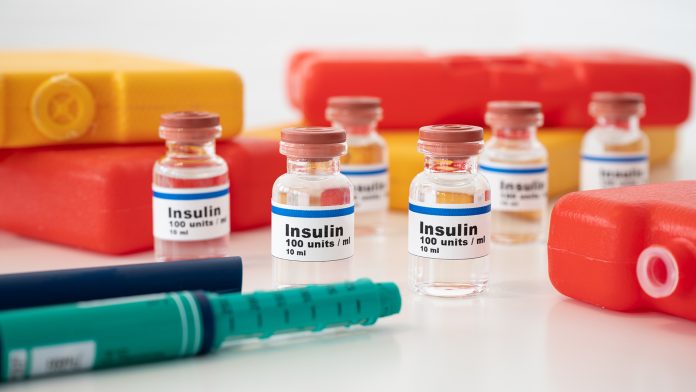
Findings from an investigation into insulin production in fruit flies may provide answers on the hormone’s role in the human body.
Insulin is an essential hormone for humans and many animals, its most important function is regulating the metabolism of sugar in the body. Scientists have a good understanding of how insulin performs this function; however, it is less understood how the activity of insulin-producing cells and the consequent secretion of insulin is controlled.
A team of researchers from the Biocenter of Julius-Maximilians-Universität (JMU) Würzburg in Bavaria, Germany, has presented a new study on this matter in the scientific journal Current Biology.
Insulin production in fruit flies
When a fruit fly starts to walk or fly, insulin-producing cells in the fly’s body are immediately inhibited. Researchers believe this could explain why exercise promotes better health.
Dr Jan Ache’s team used a fruit fly called Drosophila melanogaster as their study object. This fruit fly also secretes insulin after eating. However, the hormone in the fly does not come from the pancreas as it does humans. In the fly, the hormone is instead released by nerve cells in the brain.
The researchers worked out that the physical activity of the fly had a strong effect on its production of insulin cells. The team measured the activity of these cells electrophysiologically in walking and flying Drosophila. This was the first time this had been done.
The researchers found when Drosophila starts to walk or fly, the insulin-producing cells in the fly are immediately inhibited. When the fly stops moving, the activity of the insulin cells rapidly increases again and rises well above normal levels.
“We hypothesise that the low activity of insulin-producing cells during walking and flight contributes to the provision of sugars to meet the increased energy demand,” said Dr Sander Liessem, first author of the publication.
“We suspect that the increased activity after exercise helps to replenish the fly’s energy stores, for example in the muscles,” he added.
The researchers also demonstrated that the fast, behaviour-dependent inhibition of insulin-producing cells was actively controlled by neural pathways.
Blood sugar levels do not affect insulin regulation
“It is largely independent of changes in the sugar concentration in the fly’s blood,” explained co-author Dr Martina Held.
The researchers agreed that it was logical for the organism to anticipate an increased energy demand in this way to prevent extreme fluctuations in blood sugar levels. The team questioned whether their findings could reveal a conclusion about how insulin production works in the human body.
“Although the release of insulin in fruit flies is mediated by different cells than in humans, the insulin molecule and its function have hardly changed in the course of evolution,” said Jan Ache.
Over the last 20 years, many key findings that have contributed to a better understanding of metabolic defects in humans and associated diseases, such as diabetes or obesity, have been found by using Drosophila as a model organism.
“One exciting point is that reduced insulin activity contributes to healthy ageing and longevity,” said Liessem.
This has already been proved in flies, mice, humans and other species and the same applies to an active lifestyle.
“Our work shows a possible link explaining how physical activity could positively affect insulin production and regulation via neuronal signalling pathways,” continued Liessem.
Now, the research team plans on investigating which neurotransmitters and neuronal circuits are responsible for the changes in activity observed in insulin production in the fly.
The researchers anticipate that this will be challenging as a vast range of messenger substances and hormones are involved in neuromodulatory processes. Additionally, individual substances can have opposite or complementary effects in combination.
The team is currently analysing the plethora of ways in which the insulin production process occurs. They are also investigating other factors that could have an influence on the activity of these cells, such as the age of the fly or their nutritional state.
“In parallel, we are investigating the neuronal control of walking and flight behaviour,” explained Ache.
According to Ache, the long-term goal of the research is to combine these two questions: How does the brain control walking and other behaviours, and how does the nervous system ensure that the energy balance is regulated accordingly?









